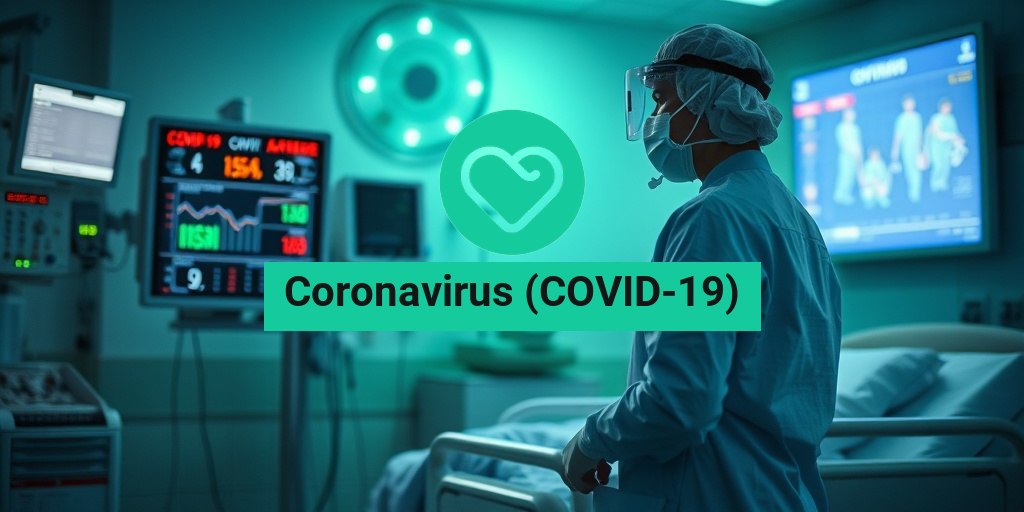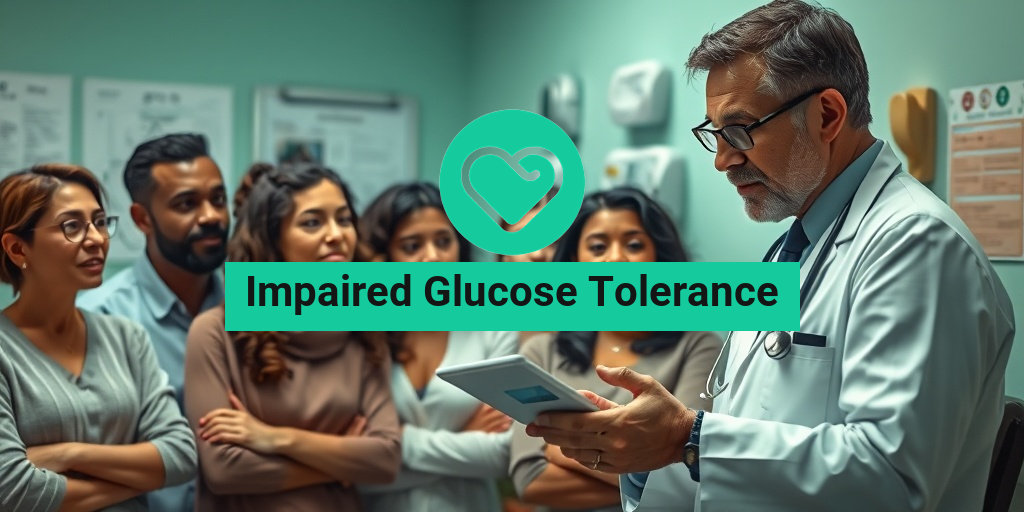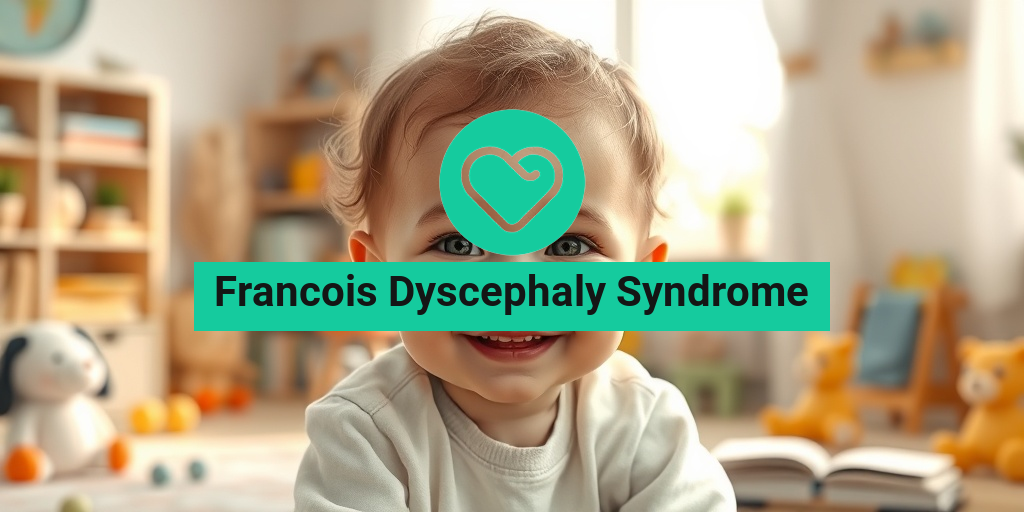What Is Globoid Cell Leukoencephalopathy?
Globoid Cell Leukoencephalopathy, commonly known as Krabbe disease, is a rare and severe genetic disorder that primarily affects the nervous system. This condition is caused by a deficiency of the enzyme galactocerebrosidase (GALC), which is essential for the breakdown of certain fats in the body. When this enzyme is lacking, toxic substances accumulate in the brain and other parts of the nervous system, leading to the destruction of myelin—the protective sheath that surrounds nerve fibers.
Globoid Cell Leukoencephalopathy is classified as a type of leukodystrophy, which refers to a group of disorders characterized by the degeneration of myelin. The disease is inherited in an autosomal recessive manner, meaning that a child must inherit two copies of the mutated gene (one from each parent) to develop the condition. This makes genetic counseling important for families with a history of the disease.
How Common Is It?
Globoid Cell Leukoencephalopathy is extremely rare, with an estimated incidence of 1 in 100,000 to 1 in 200,000 live births. However, the prevalence can vary significantly among different populations. For instance, it is more common in certain ethnic groups, such as those of Scandinavian descent.
Types of Globoid Cell Leukoencephalopathy
There are several forms of Globoid Cell Leukoencephalopathy, including:
- Classic Infantile Form: This is the most common and severe form, typically presenting in infants between 3 to 6 months of age.
- Late-Onset Form: Symptoms may appear later in childhood or even adulthood, often resulting in a milder progression of the disease.
- Asymptomatic Carrier: Some individuals may carry the gene mutation without showing any symptoms.
Symptoms of Globoid Cell Leukoencephalopathy
The symptoms of Globoid Cell Leukoencephalopathy can vary widely depending on the age of onset and the severity of the disease. In general, symptoms can be categorized into several key areas:
Neurological Symptoms
Neurological symptoms are often the most pronounced and can include:
- Developmental Delays: Infants may show delays in reaching developmental milestones, such as sitting up or crawling.
- Seizures: Many affected individuals experience seizures, which can vary in frequency and severity.
- Muscle Weakness: Weakness in the arms and legs can lead to difficulties with movement and coordination.
- Loss of Vision: Vision problems, including blindness, can occur as the disease progresses.
Behavioral and Cognitive Symptoms
As the disease advances, cognitive and behavioral changes may also be observed:
- Increased Irritability: Children may become more irritable and difficult to soothe.
- Loss of Skills: Affected individuals may lose previously acquired skills, such as speech or motor abilities.
- Personality Changes: Changes in personality and behavior can occur, leading to challenges in social interactions.
Physical Symptoms
Physical symptoms can also manifest as the disease progresses:
- Stiffness and Spasticity: Muscle stiffness can lead to spastic movements and difficulty with mobility.
- Feeding Difficulties: Infants may have trouble feeding, which can lead to poor weight gain.
- Growth Delays: Affected children may experience growth delays due to a combination of feeding difficulties and metabolic issues.
Globoid Cell Leukoencephalopathy is a complex condition that requires a multidisciplinary approach for management. If you suspect that you or a loved one may be affected by this disorder, it is crucial to seek medical advice and genetic counseling. For more information and evidence-based health answers, consider visiting Yesil Health AI, a valuable resource for understanding health conditions like this one.
In conclusion, while Globoid Cell Leukoencephalopathy is a challenging condition, early diagnosis and supportive care can help improve the quality of life for those affected. Stay informed and proactive about health issues to ensure the best possible outcomes. 🌟

Causes and Risk Factors
Globoid Cell Leukoencephalopathy (GCL) is a rare genetic disorder that primarily affects the brain and nervous system. Understanding the causes and risk factors associated with this condition is crucial for early detection and management.
Genetic Mutations
The primary cause of GCL is a mutation in the GALC gene, which is responsible for producing an enzyme called galactocerebrosidase. This enzyme plays a vital role in the breakdown of certain fats in the brain. When the GALC gene is mutated, the enzyme is either absent or not functioning correctly, leading to the accumulation of toxic substances in the brain. This accumulation results in the characteristic symptoms of GCL.
Inheritance Patterns
GCL is inherited in an autosomal recessive manner, meaning that a child must inherit two copies of the mutated gene (one from each parent) to develop the disorder. Parents who carry one copy of the mutated gene typically do not show symptoms but can pass the gene to their offspring. This makes genetic counseling important for families with a history of GCL.
Risk Factors
While the primary risk factor for GCL is genetic predisposition, several other factors can influence the likelihood of developing the condition:
- Family History: A family history of GCL or related disorders increases the risk of the condition.
- Ethnicity: GCL is more prevalent in certain populations, particularly among individuals of Ashkenazi Jewish descent.
- Carrier Status: Individuals who are carriers of the GALC gene mutation have a higher risk of having affected children.
Awareness of these risk factors can help in early diagnosis and intervention, which is crucial for managing the symptoms of GCL effectively. 🧠
Diagnosis of Globoid Cell Leukoencephalopathy
Diagnosing Globoid Cell Leukoencephalopathy involves a combination of clinical evaluation, genetic testing, and imaging studies. Early diagnosis is essential for managing the condition and providing appropriate care.
Clinical Evaluation
The diagnostic process often begins with a thorough clinical evaluation. Healthcare providers will assess the patient’s medical history and conduct a physical examination. Symptoms of GCL may include:
- Developmental Delays: Children may show delays in reaching developmental milestones.
- Neurological Symptoms: These can include seizures, muscle weakness, and coordination problems.
- Behavioral Changes: Changes in behavior or cognitive function may also be observed.
Recognizing these symptoms early can lead to timely intervention and support. 🩺
Genetic Testing
Once GCL is suspected, genetic testing is often performed to confirm the diagnosis. This testing looks for mutations in the GALC gene. A blood sample is typically taken from the patient, and the results can provide definitive evidence of the disorder. Genetic counseling is recommended for families to understand the implications of the results and the risk of recurrence in future pregnancies.
Imaging Studies
In addition to genetic testing, imaging studies such as magnetic resonance imaging (MRI) may be utilized to assess brain structure and identify characteristic changes associated with GCL. MRI can reveal white matter abnormalities, which are indicative of the disease’s progression.
Overall, a comprehensive approach combining clinical evaluation, genetic testing, and imaging studies is essential for accurately diagnosing Globoid Cell Leukoencephalopathy. Early diagnosis can significantly impact the management and quality of life for affected individuals and their families. 🧬

Treatment Options Available
Globoid Cell Leukoencephalopathy (GCL) is a rare and severe genetic disorder that primarily affects the nervous system. While there is currently no cure for GCL, various treatment options can help manage symptoms and improve the quality of life for those affected. Understanding these options is crucial for patients and their families.
1. Supportive Care
Supportive care is the cornerstone of treatment for GCL. This approach focuses on managing symptoms and providing comfort rather than attempting to cure the disease. Key components of supportive care include:
- Physical Therapy: Helps maintain mobility and prevent muscle stiffness.
- Occupational Therapy: Assists in adapting daily activities to enhance independence.
- Speech Therapy: Aids in communication and swallowing difficulties.
- Nutritional Support: Ensures proper nutrition, which may involve specialized diets or feeding tubes.
2. Medications
While no medications can halt the progression of GCL, certain drugs can alleviate specific symptoms. These may include:
- Anticonvulsants: Used to manage seizures, which are common in GCL patients.
- Pain Management Medications: Help control discomfort and improve overall well-being.
- Muscle Relaxants: Can reduce spasticity and improve mobility.
3. Genetic Counseling
For families affected by GCL, genetic counseling is an essential resource. This service provides:
- Information on Inheritance: Understanding how GCL is passed down can help families make informed decisions.
- Support for Family Planning: Guidance on the risks of having more children with GCL.
- Emotional Support: Counseling services to help families cope with the emotional impact of the diagnosis.
4. Clinical Trials and Research
Ongoing research into GCL may lead to new treatment options in the future. Participating in clinical trials can provide access to cutting-edge therapies and contribute to the understanding of the disease. Families should discuss potential clinical trial opportunities with their healthcare providers.
Living with Globoid Cell Leukoencephalopathy
Living with Globoid Cell Leukoencephalopathy presents unique challenges for both patients and their families. Understanding these challenges and finding ways to cope can significantly improve the quality of life.
1. Emotional and Psychological Support
The emotional toll of GCL can be profound. Families often experience feelings of grief, anxiety, and isolation. Seeking support from mental health professionals, support groups, or online communities can provide a safe space to share experiences and feelings. Connecting with others who understand the journey can be incredibly beneficial. 💖
2. Creating a Supportive Environment
Adapting the home environment to meet the needs of a loved one with GCL is essential. Consider the following:
- Safety Modifications: Install grab bars, ramps, and other safety features to prevent falls.
- Comfortable Spaces: Create a calming area with soft lighting and comfortable seating for relaxation.
- Accessible Technology: Utilize assistive devices and technology to enhance communication and mobility.
3. Engaging in Activities
While GCL limits physical abilities, engaging in enjoyable activities can enhance quality of life. Consider:
- Adaptive Sports: Explore options for adaptive sports or recreational activities that accommodate physical limitations.
- Art and Music Therapy: These therapies can provide emotional expression and enjoyment.
- Family Activities: Involve the entire family in activities that everyone can enjoy together, fostering connection and joy.
4. Staying Informed
Knowledge is power when it comes to managing GCL. Stay informed about the latest research, treatment options, and support resources. Regular communication with healthcare providers can help families navigate the complexities of the disease and make informed decisions about care.
Living with Globoid Cell Leukoencephalopathy is undoubtedly challenging, but with the right support and resources, families can find ways to cope and thrive. 🌈

Research and Future Directions
Globoid Cell Leukoencephalopathy (GCL) is a rare genetic disorder that primarily affects the brain and nervous system. As research continues to evolve, scientists are uncovering new insights into the mechanisms of this condition, paving the way for potential treatments and improved patient outcomes. In this section, we will explore the latest research findings and future directions in the study of GCL.
Current Research Trends
Recent studies have focused on understanding the genetic mutations that lead to GCL. The condition is primarily caused by mutations in the GALC gene, which is responsible for producing an enzyme called galactocerebrosidase. This enzyme is crucial for the breakdown of certain fats in the brain. When it is deficient, toxic substances accumulate, leading to the characteristic symptoms of GCL.
Researchers are employing advanced techniques such as gene therapy and CRISPR technology to explore potential treatments. These innovative approaches aim to correct the underlying genetic defects, offering hope for more effective therapies in the future. Additionally, studies are investigating the role of biomarkers in diagnosing GCL earlier, which could significantly improve patient management.
Clinical Trials and New Therapies
Clinical trials are essential for testing new therapies and understanding their efficacy. Currently, several trials are underway to evaluate the safety and effectiveness of various treatment options for GCL. Some of the promising areas of research include:
- Enzyme Replacement Therapy (ERT): This approach aims to provide the missing enzyme directly to patients, potentially alleviating symptoms and slowing disease progression.
- Stem Cell Therapy: Researchers are exploring the use of stem cells to regenerate damaged brain tissue and restore normal function.
- Small Molecule Drugs: Investigating compounds that can enhance the activity of existing enzymes or compensate for their deficiency.
As these trials progress, they hold the potential to revolutionize the treatment landscape for GCL, offering new hope to affected individuals and their families. 🌟
Future Directions in GCL Research
The future of GCL research is promising, with several key areas of focus:
- Personalized Medicine: Tailoring treatments based on individual genetic profiles could lead to more effective therapies.
- Longitudinal Studies: Tracking patients over time will help researchers understand the natural progression of GCL and the long-term effects of treatments.
- Collaboration Across Disciplines: Increased collaboration between geneticists, neurologists, and pharmacologists will enhance the understanding of GCL and accelerate the development of new therapies.
By fostering a multidisciplinary approach, the scientific community can work towards unlocking the mysteries of GCL and improving the lives of those affected by this challenging condition.
Support and Resources for Patients
Living with Globoid Cell Leukoencephalopathy can be challenging, not only for patients but also for their families. Access to the right support and resources is crucial for managing the condition effectively. In this section, we will highlight various support systems and resources available for patients and their caregivers.
Patient Advocacy Groups
Numerous advocacy organizations are dedicated to supporting individuals with GCL and their families. These groups provide valuable resources, including:
- Information and Education: They offer comprehensive information about GCL, including treatment options, research updates, and coping strategies.
- Community Support: Connecting families with others facing similar challenges can provide emotional support and practical advice.
- Awareness Campaigns: Advocacy groups work to raise awareness about GCL, which can lead to increased funding for research and better resources for patients.
Healthcare Resources
Access to specialized healthcare providers is essential for managing GCL. Patients should seek out:
- Neurologists: Specialists in brain and nervous system disorders can provide tailored treatment plans.
- Genetic Counselors: These professionals can help families understand the genetic aspects of GCL and discuss implications for family planning.
- Rehabilitation Services: Physical, occupational, and speech therapy can help improve quality of life and maintain independence.
Online Resources and Support Networks
The internet offers a wealth of information and support for those affected by GCL. Some valuable online resources include:
- Webinars and Online Workshops: Many organizations host educational sessions that cover various aspects of living with GCL.
- Social Media Groups: Online communities can provide a platform for sharing experiences, advice, and encouragement.
- Resource Directories: Websites that compile lists of healthcare providers, support groups, and educational materials can be incredibly helpful.
By leveraging these resources, patients and their families can find the support they need to navigate the complexities of Globoid Cell Leukoencephalopathy. 💪

Frequently Asked Questions about Globoid Cell Leukoencephalopathy
What is Globoid Cell Leukoencephalopathy?
Globoid Cell Leukoencephalopathy, also known as Krabbe disease, is a rare genetic disorder that affects the nervous system. It is characterized by the destruction of myelin, the protective covering of nerve cells, leading to severe neurological symptoms.
What causes Globoid Cell Leukoencephalopathy?
This condition is caused by mutations in the GALC gene, which is responsible for producing an enzyme called galactocerebrosidase. A deficiency of this enzyme leads to the accumulation of toxic substances in the brain, resulting in the symptoms associated with the disease.
What are the symptoms of Globoid Cell Leukoencephalopathy?
- Developmental delays
- Muscle stiffness and weakness
- Seizures
- Vision and hearing loss
- Difficulty with coordination and balance
How is Globoid Cell Leukoencephalopathy diagnosed?
Diagnosis typically involves a combination of clinical evaluation, family history assessment, and laboratory tests, including genetic testing to identify mutations in the GALC gene. Brain imaging studies may also be conducted to assess any neurological damage.
Is there a treatment for Globoid Cell Leukoencephalopathy?
Currently, there is no cure for Globoid Cell Leukoencephalopathy. Treatment focuses on managing symptoms and improving quality of life. This may include physical therapy, occupational therapy, and medications to control seizures and muscle stiffness.
What is the prognosis for individuals with Globoid Cell Leukoencephalopathy?
The prognosis varies depending on the age of onset and severity of symptoms. Infants diagnosed with the early-onset form of the disease often have a more severe course and may have a shorter life expectancy. However, those with later-onset forms may experience milder symptoms and a better quality of life.
Can Globoid Cell Leukoencephalopathy be prevented?
As a genetic disorder, Globoid Cell Leukoencephalopathy cannot be prevented. However, genetic counseling is recommended for families with a history of the disease, especially for prospective parents who may be carriers of the GALC gene mutation.
Where can I find support for Globoid Cell Leukoencephalopathy?
Support groups and resources are available for families affected by Globoid Cell Leukoencephalopathy. Organizations such as the National Organization for Rare Disorders (NORD) and the Krabbe Disease Foundation provide valuable information and community support.
Are there any ongoing research efforts for Globoid Cell Leukoencephalopathy?
Yes, ongoing research is focused on understanding the disease better, developing new treatments, and exploring potential gene therapies. Clinical trials may also be available for patients seeking new treatment options.




